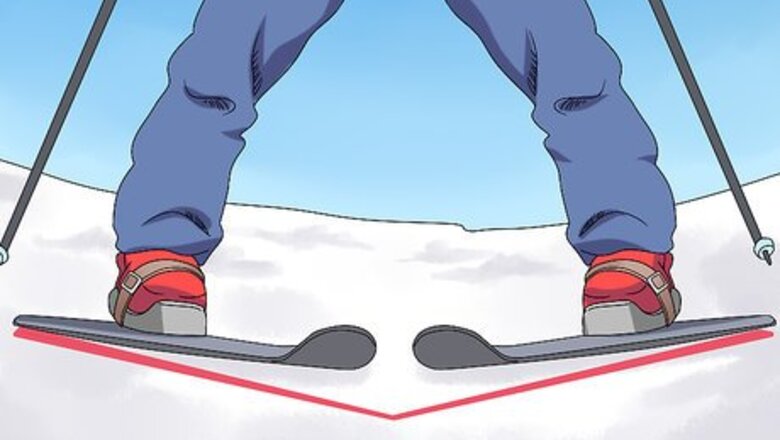
views
Completing a Snowplough Turn

Position your skis in a “V” shape. If you are just learning how to turn, the snowplough turn is a great place to start. Angle the front tips of your skis toward the middle, so the back end of your skis are spread wider than the front end. With this positioning, you point the right ski in the left direction and the left ski in the right direction.

Slide forward with your weight evenly distributed to start moving. Start at the top of the slope. To gain momentum, bend your knees slightly, keep your feet centered, and angle your shoulders slightly forward. As you do this, you will start to slide down the slope. This way, you’ll start gaining speed so you can easily make your turn.

Push with your right leg to make a left turn, and your left leg to make a right turn. Distribute your weight onto the right ski as you slide down the slope. Since your right ski is slightly angled toward the left, you'll slide toward the left side. To ski toward the left, simply push with your left leg instead of your right.
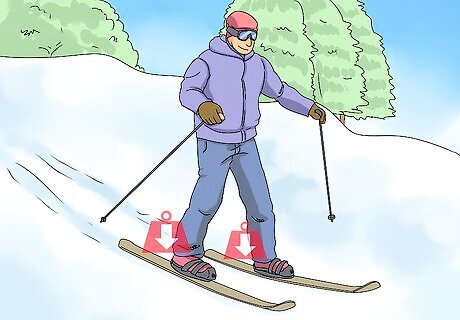
Distribute your weight evenly on both skis again to initiate a new turn. If you want to change directions, shift your weight back onto both skis by pivoting your hips so they are straight. This slows down your speed, so you can easily adjust to the other side. If you want to turn the opposite direction, simply lean the opposite way.
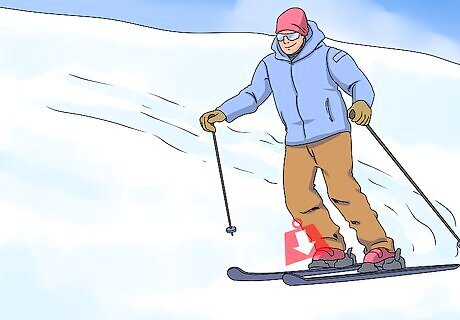
Change your weight distribution to travel quicker or further. Take some weight off of the right ski if you want to pick up speed and turn sharply. If you want to slow down and come further across the slope, put more weight onto one side of your ski. By adjusting your weight, you can change the speed of your turn.
Doing a Parallel Turn
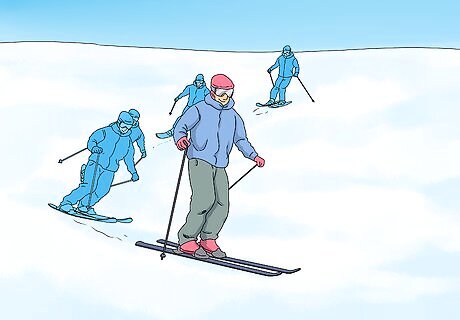
Try a parallel turn when you get the hang of the snowplough turn. After you learn the ropes and feel confident with basic turns, start to practice parallel turns. During these turns, your skis stay parallel to each other throughout the entire turn. The turn is made by pivoting your hips to redirect your weight. Once you learn how to parallel turn, you usually don’t need to do the snowplough turn.
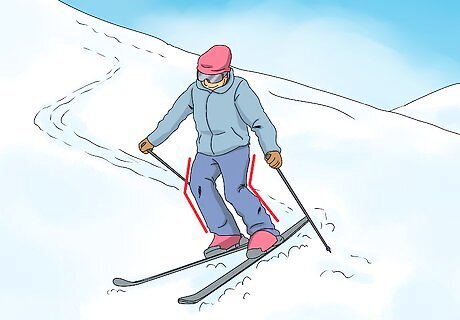
Lean forward and distribute your weight across both skis to start your turn. Bend your knees and move your shoulders toward the front of your skis. This repositions your body weight and starts moving you down the slope. When doing a parallel turn, you use your body weight to increase your momentum and make your turn.
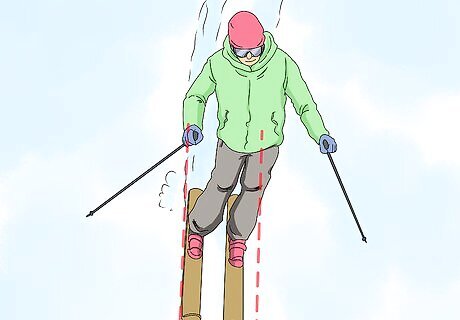
Match the direction of your skis and your body to orient your turn. When parallel skiing, your skis should always face straight toward the front. This determines your direction of travel. To go toward the left, move your hips toward the left. To turn toward the right, reposition your body to the right side.
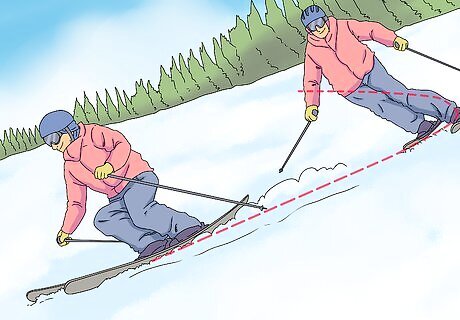
Push to one side to redistribute your weight and make your turn. To turn, roll your knees and ankles in the direction you want to turn. Move both of your feet toward the same direction to keep your skis parallel. You can then switch your turn by adjusting your weight to the other side of your foot. If you want to turn to the right, adjust your weight toward the right side of your feet. Put your weight on the left side of both feet to make a turn toward the left. Keep your shoulders slightly rotated toward the direction you want to turn.
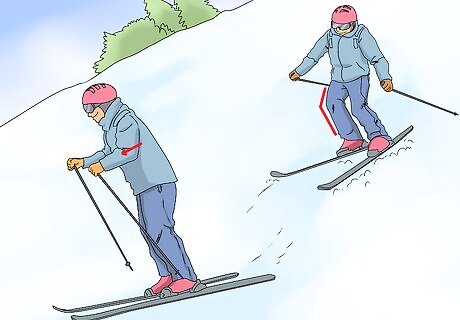
Ski at a constant speed until you want to come out of your turn. Ski with your knees slightly bent and your weight distributed to the side you want to turn toward. When you finish your turn, distribute your weight toward the front center of your skis by leaning your shoulders forward. This realigns you to the forward parallel skiing position. The momentum you build up as you ski controls your speed.
Using the Carve Turn
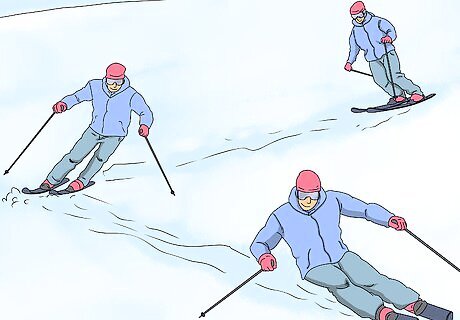
Go for a carved turn when you want to take your skiing to the next level. A carved turn refers to a technique where the ski shifts from one side to the other. To do this, redistribute your weight onto the very edges of your skis. Skis are thinner in the middle than at the top and bottom. This hourglass shape makes it possible to make a carve turn. Keep the edge of your ski firmly against the ground, and your momentum will naturally make the turn. A carve turn is a type of parallel turn. The ski bends into an arc when on its edge, and following this arc shape makes a seamless turning motion.
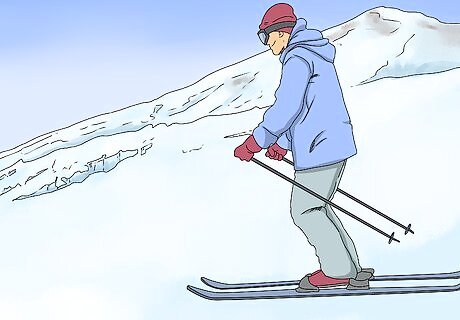
Start to slide down the slope to gain momentum and speed. Position your feet hip-width apart, and place your hands on the poles in front of you. Then, lean forward slightly to move down the hill and gain momentum. Continue going straight down the slope to get more speed. When carving, gravity and momentum make the turn for you.

Roll onto the edge of the ski to start your turn. When you want to turn, move your ankles to the side to roll onto the edge of your skis. If you want to turn toward the right, move your ankles toward the right side. To move toward the left, position your ankles onto the left edge. Move both ankles toward the same side in either case. Applying pressure to the skis makes your them naturally curve as you move.
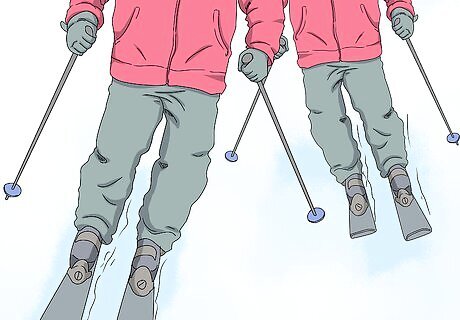
Move your knees and ankles from side to side to change direction. You can easily move from left to right to carve down the slope. To do this, quickly roll from 1 edge to the other by shifting your ankles and knees to the opposite side. This distributes pressure to the other edge of your skis, so you can still follow their natural shape.

Put more pressure on the edge of your ski as you complete your turn. When you are coming to the end of your turn, apply more pressure to the edges of your skis. This applies pressure to the middle of the board, which helps you slow down and ease out of the turn.
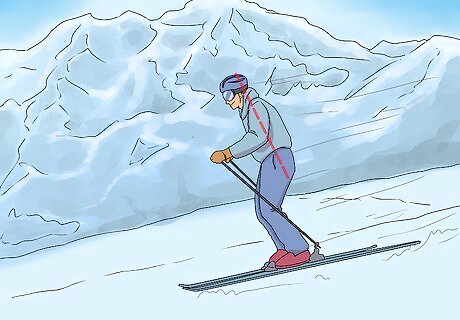
Lean forward to redistribute your weight and increase your speed. Repositioning the weight onto the front of your skis helps increase your speed, so you can move down the slope even faster. To do this, move your shoulders toward the front of your skis. Do this after you’ve nailed the turn, as you already will go rather quickly with this turn option!
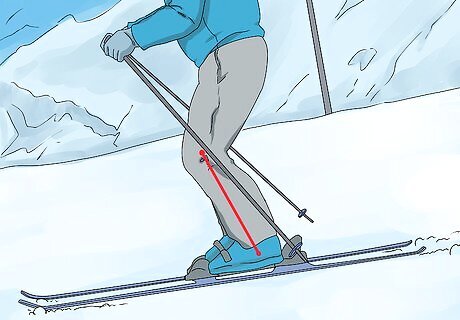
Straighten your knees and ankles to finish your turn. Once you’ve finished carving down the slope, move your ankles back to the center of your skis to start going straight again. This will slowly decrease your speed. Then, you can continue going straight or use your poles to start to slow down.




















Comments
0 comment